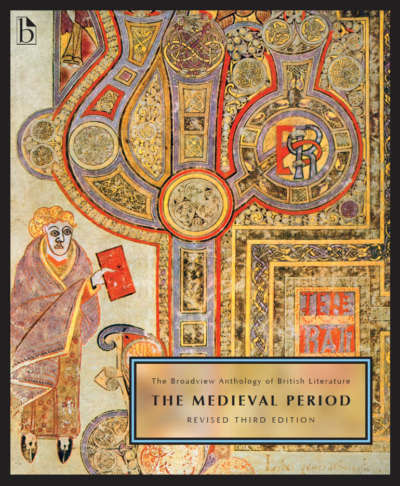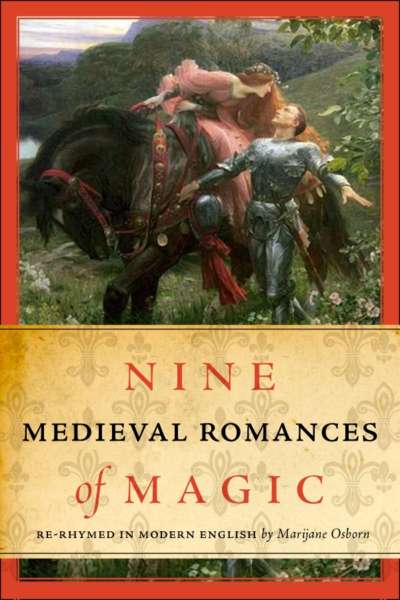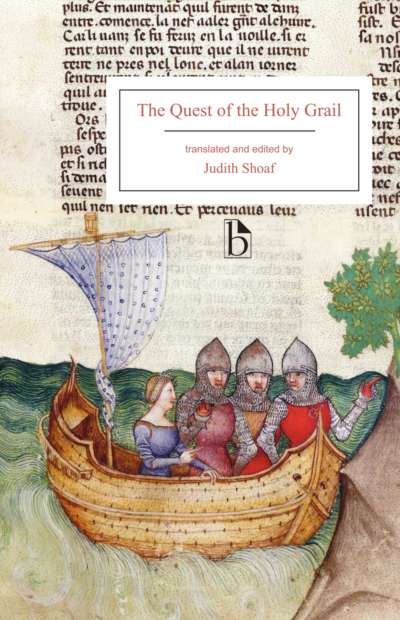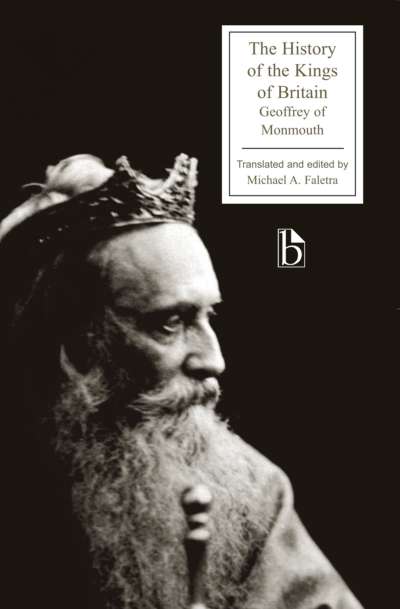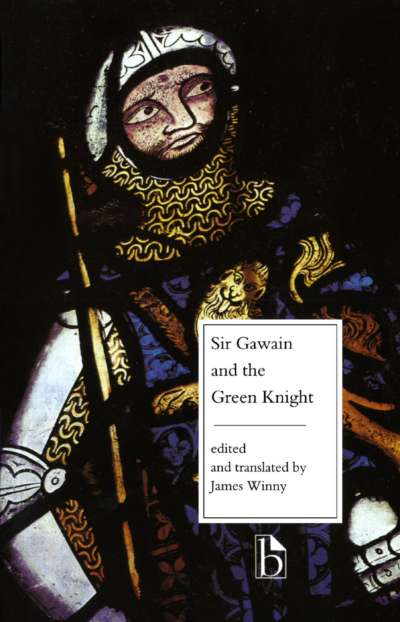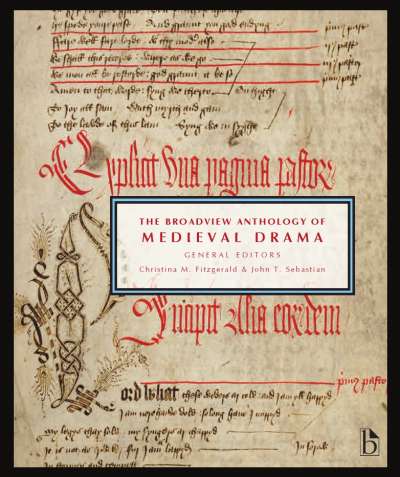This teaching anthology collects texts from the vast archive of medieval Arthurian literature. It includes selections from mainstream canonical authors, such as Geoffrey of Monmouth and Sir Thomas Malory, and more peripheral works, such as the Melech Artus (a twelfth-century Hebrew text) and the Dutch Morien (featuring a black knight). In this it differs from other anthologies of medieval Arthuriana: it is more inclusive and diverse than previous collections. Characters and authors showcase the diversity of race, religion, gender, and gender orientation of the Arthurian tradition. As well, this anthology and its accompanying website include a variety of genres, ranging from visual art to sculpture, from historical chronicles to romance and drama. Arthurian works, while concentrated in England, France, and Wales, are found across medieval Europe; this anthology therefore includes texts from Iceland to Greece.
The Broadview Anthology of Medieval Arthurian Literature is ideally suited to teaching: it includes full texts, such as Chrétien de Troyes’s Knight of the Cart, Chaucer’s “Wife of Bath’s Tale,” and the anonymous Sir Gawain and the Green Knight, for classes that wish to study a whole work in depth; it also includes shorter excerpts of parallel incidents, such as the Uther and Igraine story, so that students can compare a story’s treatment by different authors. Marginal glosses assist students with the Middle English texts, while introductory notes and explanatory footnotes give students necessary background information.
Comments
“The superb Broadview Anthology of Medieval Arthurian Literature offers a carefully chosen and wide-ranging selection, including canonical English, French, and German works alongside lesser-known texts in, for instance, Dutch, Greek, Hebrew, and Old Norse, and admirably foregrounding the ways in which translation functions both across cultures and across languages. Indeed, inclusivity is a hallmark of this wonderful volume, which Kathy Cawsey and Elizabeth Edwards have skillfully curated to give invaluable insights into not only the Arthurian legend’s geographical reach and generic variety but also the diversity of its racial, religious, and sexual identities and attitudes. A fantastic and very welcome new resource for studying medieval Arthuriana.” — Megan Leitch, Cardiff University
“The Broadview Anthology of Medieval Arthurian Literature is more than simply the ideal Arthurian anthology for twenty-first-century undergraduates studying English literature. Going beyond the canonical Latin, French, and English texts that established the characters and narratives collected in Thomas Malory’s Morte Darthur, BAMAL adds texts from Welsh, Hebrew, Norse, Dutch, German, and Greek, plus a collection of visual images, all of which make it a unique collection. More than any previous anthology, BAMAL shows the diversity and vitality of medieval Arthurian literature.” — Michael W. Twomey, Ithaca College
“The Broadview Anthology of Medieval Arthurian Literature is fantastic. The selections richly cover the thousand years of medieval Arthurian literature, in all its geographic, linguistic, and cultural diversity. ‘Must-have’ canonical works by Geoffrey of Monmouth, Chrétien, or the Gawain-poet are enriched by texts that speak to contemporary concerns of inclusion, represented by the transgender hero Silence and the Moorish knight Morien. Texts formerly deemed peripheral now provide opportunities for comparison, such as the Jewish morality tale Melech Artus, in which the grail becomes a plate for serving the poor, or the Greek tale The Old Knight, in which the hero fights ageism. Crisp headnotes provide students easy access to the works and helpful suggestions for further research. The collection replaces all prior anthologies while offering professors of Arthurian literature or Middle English courses many paths to choose through the woods of medieval Arthuriana.” — Karen Cherewatuk, St. Olaf College
Readings listed in green are included on the anthology’s companion website.
Acknowledgements
List of Images
Timeline of Medieval Arthurian Literature
General Introduction
Texts
- a. Early Welsh poetry
- i. Y Gododdin (The Gododdin)
- ii. Trioedd Ynys Prydein (The Welsh Triads)
- iii. Englynion y Beddau (Stanzas of the Graves)
- iv. Pa gwr yw’r porthor (What Man Is the Gatekeeper?)
- v. Preiddeu Annwn (The Spoils of Annwn)
- b. Early Latin Texts
- i. Gildas, De excidio Britanniae (The Ruin of Britain)
- ii. Pseudo–Nennius, Historia Brittonum (The History of the Britons)
- iii. Annales Cambriae (The Annals of the Welsh)
- iv. William of Malmesbury, Gesta regum Anglorum (The Deeds of the Kings of the English)
- v. Gerald of Wales
- Descriptio Kambriae (The Description of Wales)
- De principis instructione liber (The Education of Princes)
- c. Culhwch and Olwen
- d. Geoffrey of Monmouth
- i. De gestis Britonum (On the Deeds of the Britons)
- Book Eight
- Stonehenge and the Crowning of Uther Pendragon
- Uther and Igerna
- The Death of Uther
- Book Nine
- The Crowning of Arthur
- Arthur Fights the Saxons
- Arthur Marries Guinevere
- Peacetime Pastimes
- Emperor Lucius
- Book Ten
- Arthur’s Dream
- Giant of Mont St. Michel
- Various Battles with Rome
- Mordred’s Betrayal
- Book Eleven
- ii. Vita Merlini (The Life of Merlin)
- e. Wace, Roman de Brut (The Romance of Brutus)
- i. 8556–822: Uther and Ygerne; Conception, Disguise, Merlin
- ii. 9587–804: Arthur’s Court and the Round Table
- iii. 9905–10104: The Conquest of France and the Defeat of Frollo
- iv. 10437–954: Arthur’s Coronation to the Arrival of the Roman Ambassadors
- v. 11173–89: Modret’s Adulterous Desire for the Queen
- vi. 11239–606: Arthur’s Dream and the Giant of Mont St. Michel
- vii. 13010–298: Modred, Guinevere, and the Death of Arthur
- f. Chrétien de Troyes, Le Chevalier de la Charrette (The Knight of the Cart)
- g. Marie de France
- i. Lanval
- ii. Chevrefoil (Honeysuckle)
- h. Lai of Melion (The Lay of Melion)
- i. Béroul, Tristran and Iseut
- i. The Ambiguous Oath
- ii. King Arthur’s Court
- iii. The Malpas
- j. Layamon, Brut
- i. 9797–980: Uther’s Death and Arthur’s Ascension
- ii. 10507–706: The Battle of Bath
- iii. 11345–464: The Invention of the Round Table
- k. Gunnlaugr Leifsson, Merlínússpá (Merlin’s Prophecy)
- l. Wolfram von Eschenbach, Parzival
- m. Lancelot–Graal (The Lancelot–Grail Cycle)
- i. Lancelot
- ii. The Quest of the Holy Grail
- n. Heldris of Cornwall, Roman de Silence (The Romance of Silence)
- i. Nature vs. Nurture
- ii. Merlin Sections
- o. Morien
- p. Melech Artus (King Artus)
- q. The Alliterative Morte Arthure
- r. Geoffrey Chaucer, “The Wife of Bath’s Tale”
- s. Sir Gawain and the Green Knight (parallel text)
- t. The Stanzaic Morte Arthur
- i. 1−1181: The Maid of Ascolat
- ii. 1672−2029: The Beginning of the End
- u. Thomas Chestre, Sir Launfal
- v. Hans Rosenplüt, Diu Kron (The Crown)
- w. The Prose Merlin
- i. The Conception of Merlin
- ii. Uther and Ygerne
- iii. Nimiane and Merlin
- iv. Merlin’s Entrapment
- x. The Wedding of Sir Gawain and Dame Ragnelle
- y. Hippótēs ho Presbútēs (The Old Knight)
- z. Sir Thomas Malory, Le Morte Darthur
- 1. Tale I: ‘Fro the Mariage of Kinge Uther unto Kinge Arthure that Regned aftir Him and ded Many Batailes’
- i. Uther and Igraine
- ii. The Sword in the Stone
- iii. Arthur’s Wedding and the Formation of the Round Table
- iv. The Pentecostal Oath
- v. Merlin and Nenyve
- vi. Arthur and Accolon
- vii. Pelleas and Ettarde
- 2. Tale V: ‘The Boke of Sir Trystrams de Lyones’
- 3. Tale VI: ‘The Tale of the Sankgreal’
- 4. Tale VII: ‘The Tale of Sir Launcelot [and Queen Gwenyvere]’
- i. Elaine of Ascolat
- ii. The Knight of the Cart
- iii. The Healing of Sir Urry
- 5. Tale VIII: ‘The Moste Piteuous Tale of the Morte Arthure saunz Gwerdon’
- i. Rumours
- ii. The War with Launcelot
- iii. Mordred
- iv. The Death of Arthur
- v. The Deaths of Gwenyvere and Launcelot
List of Figures
Index of Authors and Titles
Kathy Cawsey is Professor of English at Dalhousie University. Elizabeth Edwards is Inglis Professor at the University of King’s College.
A companion website will provide additional readings to supplement those in the print book.



